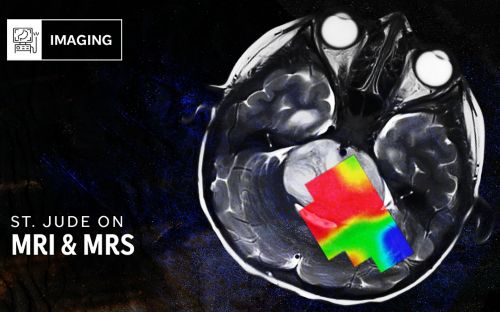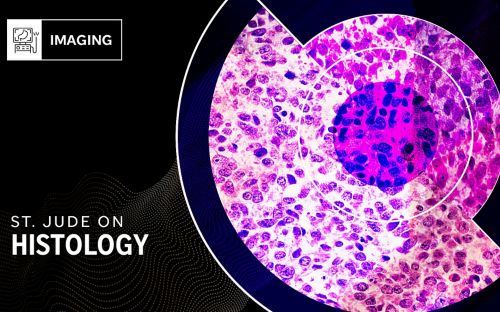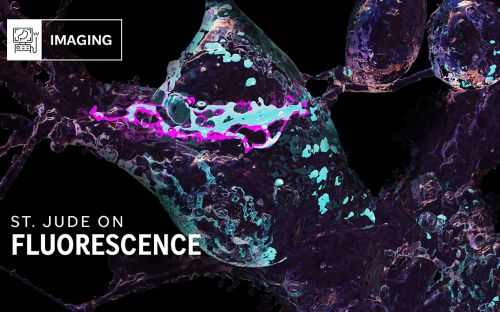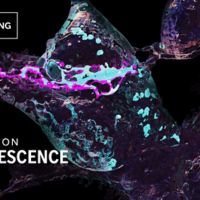St. Jude scientists on the hunt for ‘holy grail’ cancer vulnerabilities

St. Jude is at the forefront of the hunt for cancer vulnerabilities, weaknesses that can be exploited by novel therapeutic development.
Everything, including cancer, has a weakness —some vulnerability that can be exploited to ultimately spark cancer’s demise. But finding such weaknesses tucked away in the inner workings of a cancer cell is a tremendous challenge. Identifying vulnerabilities that are unique to cancer, and that when targeted with drugs do not harm other cells, is the holy grail for cancer researchers. At St. Jude, scientists are on the hunt for these vulnerabilities, leveraging years of expertise, tremendous technological capabilities and one-of-a-kind partnerships to get the job done.
While St. Jude has a rich history of research on cancer genetics there remains much to discover about the way genes are controlled and expressed in tumors. This includes the complex relationships that exist between different genes and their functions in healthy and cancer cells. In contrast to systemic approaches to cancer treatment such as chemotherapy that blanket the body affecting many cells and tissues, targeted therapy aims to impact a specific gene or protein to selectively destroy cancer cells.
When the target is right, such as with drugs that go after BCR-ABL fusions in leukemia, the results of targeted therapy can be highly beneficial. However, history has demonstrated that these therapies are subject to treatment resistance. This is a phenomenon whereby the cancer cells find ways to circumnavigate the targeted therapy’s effect. Despite that fact, these drugs still can have tremendous benefit because they limit side-effect profiles and can often be combined with other approaches to prevent resistance and deliver cures.
Years of research has pushed scientists at St. Jude and elsewhere to consider not just the genetics of cancer, but the epigenetics, the mechanisms that lie behind how genes are controlled and expressed. These epigenetic mechanisms have been found to play prominent roles in pediatric cancer, revealing new avenues for therapy. At St. Jude, scientists are pursuing genetic and epigenetic approaches to exploit cancer’s vulnerabilities and provide new treatment options to children with all forms of cancer.
“Cancer is the number one cause of death by disease for children in the United States. We want to move as rapidly as possible to develop new therapies. However, with traditional approaches it takes decades in a research laboratory to understand cancer mechanisms and get to treatment,” said Charles W.M. Roberts, MD, PhD, St. Jude Comprehensive Cancer Center director. “We now have proof of principle using new technologies that we can systematically discover unappreciated vulnerabilities to leapfrog forward in the development of new therapeutic trials and in overcoming drug resistance.”
Turning promise into practice for cancer vulnerabilities
In addition to leading the Cancer Center, Roberts is a researcher and physician who studies mutations in SMARCB1/INI1. Mutation of this gene is causative of rhabdoid tumors, rare cancers that develop in the kidney, brain, liver or other soft tissues in the body. Occurring in babies and toddlers, these cancers are lethal in most cases. Roberts is particularly interested in SMARCB1/INI1 because it is part of the SWI/SNF chromatin remodeling complex. We now know that SWI/SNF complex mutations are present in more than 20% of all cancers of adults and children thus giving his work broad relevance to many types of cancer. Research from Roberts’ lab proved that mutated SMARCB1 causes cancer by impacting chromatin.
In 2010, Roberts found that the function of SWI/SNF is counter-balanced by a gene called EZH2. Due to the absence of SMARCB/INI1 in rhabdoid tumors, the activity of EZH2 was unchecked. He showed in the lab that shutting down EZH2 can stop the growth of cancers with mutations in SMARCB1/INI1, a discovery that ultimately contributed to FDA approval in 2020 of EZH2 inhibitors for SMARCB1-mutant cancers. While inhibitors of the EZH2 have proven effective, these drugs are subject to treatment resistance. In 2022, Roberts’ lab identified another key vulnerability in these cancers and a novel drug target that may help overcome resistance to EZH2 inhibitors. A paper on the work appeared in Molecular Cell.
The scientists used CRISPR screens in SMARCB1-mutant rhabdoid tumor cells to identify potential resistance mechanisms. Chromatin must unwind to turn genes on in a process closely regulated by the SWI/SNF complex. The study showed that loss of another chromatin regulator, NSD1, caused EZH2 inhibitor resistance which could be reversed by inhibiting the gene KDM2A, which normally antagonizes function of NSD1.
“This study illuminates how chromatin regulators interact to control transcription,” Roberts said. “It not only helps us understand this class of cancers but also offers insight into treating other cancers that carry activating mutations in EZH2.”
Collaboration leads the way into the future
“Many hands make light work” is an English proverb dating back to the 1300s, but it remains incredibly relevant to the work of scientists at St. Jude today. Collaboration is at the core of the St. Jude scientific enterprise, driving across specialties, across diseases and across institutions. Continuing this spirit of partnership, three of the world’s top research institutions recently joined forces to drive progress against pediatric cancer.
The Broad Institute of MIT and Harvard, Dana-Farber Cancer Institute and St. Jude Children’s Research Hospital recently announced the largest academic collaboration of its kind to transform and accelerate the identification of vulnerabilities in pediatric cancers and translate them into better treatments. The $60+ million large-scale collaboration will leverage each institution’s expertise and infrastructure to advance understanding of the biological basis of pediatric cancers, identify new vulnerabilities of these diseases and accelerate cures globally.
“My passion continues to be to understand the mechanisms of what goes wrong when genes are mutated that result in cancer formation, and ultimately how we can use this information to better treat cancers,” Roberts said. “At St. Jude, we continue to pursue these questions, and the new collaboration with the Broad Institute and Dana-Farber Cancer Institute will enable all of us to make progress faster, together.”
Innovative approaches across the spectrum of cancers
Many of the approaches and strategies that Roberts’ lab and their collaborators employ in their work are being deployed to better understand other aspects of solid, blood and brain cancers.
- Mark Hatley, MD, PhD, St. Jude Department of Oncology revealed in Nature Communications how the tumor suppressor gene PTEN plays a more important role in pediatric rhabdomyosarcoma than was previously appreciated.
- Also in rhabdomyosarcoma, Jun Yang, MD, PhD, St. Jude Department of Surgery developed a treatment strategy combining KDM4B inhibition with currently used chemotherapy regimens to target a class of proteins called KDM4 in alveolar rhabdomyosarcoma driven by PAX3-FOXO1 gene fusions which was published in Science Translational Medicine.
- Paul Northcott, PhD, St. Jude Department of Developmental Neurobiology recently revealed the developmental origins of the brain tumor medulloblastoma in Nature. Northcott tracked the developmental beginnings of group 3 and group 4 medulloblastoma to the rhombic lip, helping researchers design better models and gain a more nuanced understanding of tumor specific dependencies that can be explored therapeutically.
- In leukemia, Jun J. Yang, PhD, St. Jude Departments of Pharmacy and Pharmaceutical Sciences and Oncology, and Zoran Rankovic, PhD, St. Jude Department of Chemical Biology & Therapeutics, leveraged the latest chemical technology called a proteolysis targeting chimera (PROTAC) to develop a drug for the high-risk blood cancer T-cell acute lymphoblastic leukemia (T-ALL). Published in Science Translational Medicine the researchers showed that their PROTAC was successful at eliminating the LCK protein and killing LCK-activated T-ALL.
Understanding pediatric cancers and developing novel treatment strategies requires digging deeper into the biology behind these diseases. At St. Jude, researchers are actively exploring the uncharted biological frontier of pediatric cancers to make the discoveries that we change the fate of children in the clinic.






